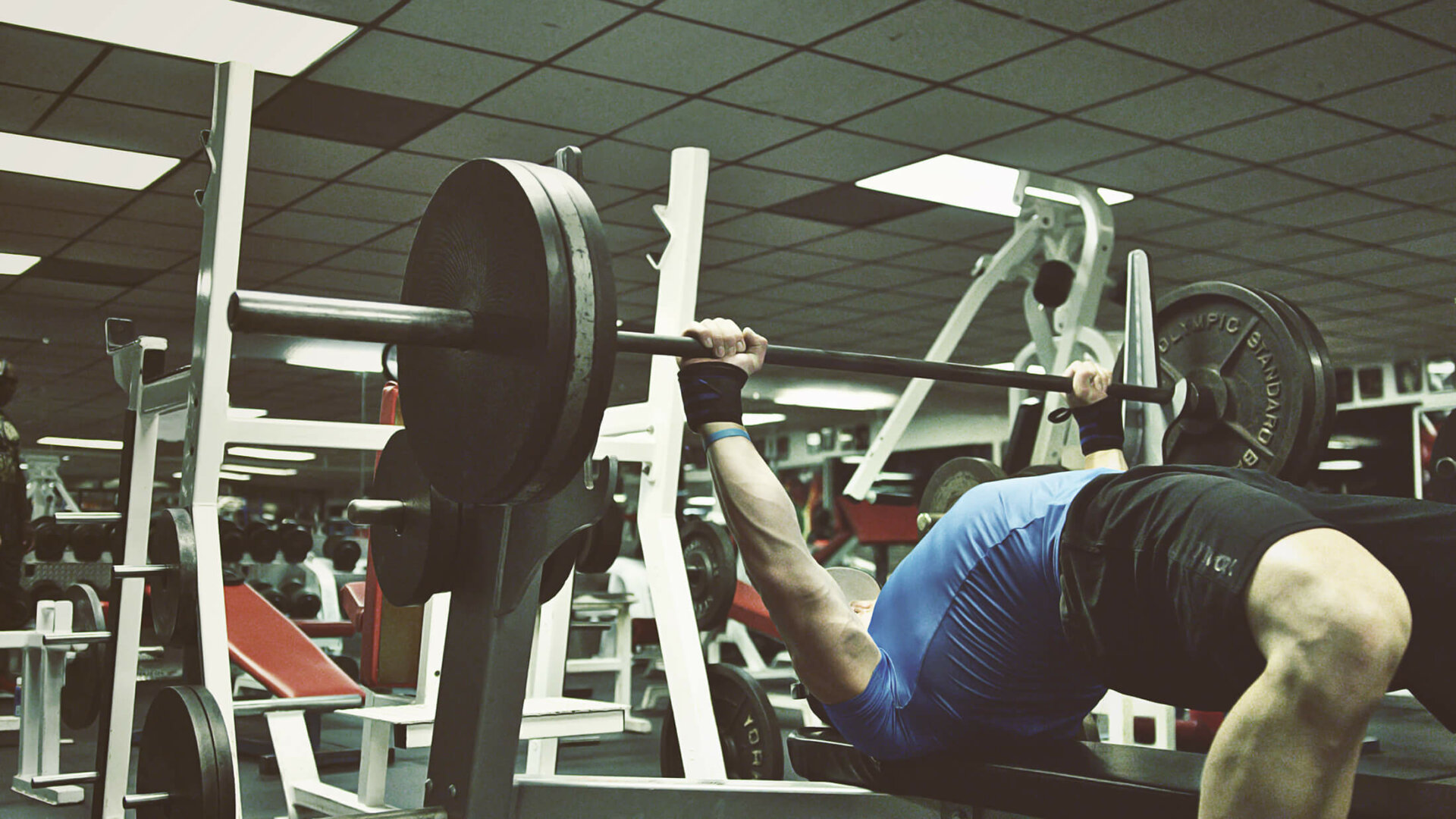The best way to gain muscle and strength, and to lose fat is through progressive overload. There are a lot of metrics to look at regarding progressive overload, but for the lifter who has been at it a while, there are three important ones that you can’t overlook. Those specific metrics are volume, density, and intensity,
1. Volume
For fat loss, volume is key. Also called “tonnage,” it refers to the amount of weight lifted. Depending on your goal(s) you can do it lift by lift, or think of it in terms of the whole workout. Let’s take a look at it using a given lift.
Let’s say you are doing squats. Your working sets have you using 200lbs, and you’re doing 7 x 4. You would first figure out the total number of reps you are doing. In this example, 28 reps.
Next, we take those 28 reps and multiply by the weight you used. In the example, that gives us 200 x 28, for a total squat volume of 5600lbs. But, work sets don’t always use one constant weight. So if that is the case, you have to do a little bit more math to make the equation work. So let’s say you’re still doing 7 x 4 for your squats. This time, your working weight looks like this:
- 180 x 4
- 190 x 4
- 200 x 4
- 225 x 4
- 225 x 4
- 225 x 4
- 225 x 4
To figure out the volume here, we would not that we are doing 16 reps with 225. So 225 x 16 gives us 3600lbs of volume. Then, we do the following (180 x 4) + (190 x 4) + (200 x 4) for 2280 lbs of volume. Add 2280 + 3600 and we get 5880lbs of volume.
How to add more volume
There are a few ways to do this. A nifty little way to add more volume and see where you are strength-wise is to add an AMRAP set at the end of your work sets. So in our example, if you tacked on a set of squats at 205lbs for an AMRAP set and managed to get eight reps, you added another 1640lbs of volume to the workout. That increases the total volume to 7520lbs.
Another solid way to add more volume is to do higher rep sets. For fat loss and preserving your body in the event of working around an injury, you can do sets of 10, 12, and even 20 reps, if your goals allow it. Note that if your goal is to increase max strength for something like powerlifting, increases in volume are good. Increasing volume via higher rep sets shouldn’t happen often. Better still, add them in the off-season. Or at least incorporate higher reps on your accessory work. Exercises like pull-ups, dumbbell rows, reverse hypers, and so forth.
Last, in the volume side of things, you can exercise with more frequency. If we take our squat example, in the final version, we had 5880lbs of volume on a given day. If you squat three times a week, that’s 17640lbs of volume on the squat in a week. Combine that with your other lifts, and you can rack up some serious volume.
On a final note, these aren’t the only ways to increase volume. As your actual load on a given exercise goes up, and as those reps go up, your total volume goes up as well.
2. Density
Density is the amount of work you do—the volume—in a given time. So in our example, you did 5880lbs of volume in your squat. You did so in 30 minutes one day. Then, another day it took you 25 minutes. Your workout has increased density. To see it in numbers, you can just use this simple equation: volume ÷ time. In the examples I gave, we get 196 and 235.2, as it were.
Charles Staley came up with EDT (Escalating Density Training) and advocated strict time rules with increases in reps over time. While useful, depending on your goals, you don’t have to be so forceful with the approach. It is worth keeping an eye on though as time goes by since density and volume are like best friends. As you get better, each of the two will also get better.
It’s also worth noting that if you do a given squat workout in 30 minutes and you do another one at a higher volume in the same amount of time (or less) your density has increased.
How to add more density
There are some options here. One easy option is to add more volume to your overall workouts. Add enough volume while keeping the time it takes to do a given workout the same (or lower) and by default, your workout is more dense. An easy way to do this is by adding a rep or two to every set. For example, your bench workout with 100lbs that consists of 5×3 in 20 minutes becomes 5×5 in 20 minutes.
Or, add more sets. In the above example, 5×3 in 2o minutes becomes 6×3 in 20 minutes. Or if your body can handle it, do both. In any event, it is a good idea to pay attention to your rest periods over time. As your volume stagnates, you can tweak your rest periods in the favor of density. and as your rest times and workout times get shorter, you can err in the favor of volume.
3. Intensity
I saved everyone’s favorite for last. Intensity is the percentage of your all out effort. In powerlifting or Olympic lifting, it comes in the form of a 1 rep max. In marathons, it is the absolute best time in which you can complete the race. Same goes for various sprint races, swimming, or even kettlebell sport competitions.
The focus here will be on strength, but I do want to touch on some of the other sports (it’ll be brief) since in many discussions outside of direct research they get overlooked. So, let’s say you can run a 50-yard dash in 10 seconds. That’s your best time. It equates to 100% intensity.
In training the 50, if you run 50 yards in 20 seconds, that equates to 50% intensity. Run it in 15 seconds, 75% intensity. If you were to run down a hill to train for speed, and you run 50 yards downhill in less than ten seconds, you have reached supramaximal intensity levels. Kind of like how if you train the deadlift off the blocks at a higher weight than your 1 rep max. Please note that this is a simple example and doesn’t reflect the actual training runners of any kind do.
How to increase intensity
Whether or not you train in a strength sport, it is helpful to take a look at your intensity. An increase here can help you out of a plateau if you are already doing a lot of volume coupled with short rest/workout times. If those 200lb squats from above are becoming too easy, it’s time to take it up to 225lbs.
As your intensity increases, your volume and density will go back down, at first. Furthermore, you will see increases in intensity less often than you will volume and density. That’s ok. Too much intensity takes its toll on the tissue. Having said that, if you are in strength sports, you do want to pay closer attention to your intensity than most so you can dominate the sport.
How to figure it all out
So now you have these metrics. Do keep in mind that they aren’t the only metrics for progressive overload. That would take a lot more of your time. But, these are easy to quantify. And quantify them you shall.
The first step, if you don’t do this, is to track your workouts. The degree to which you do this is up to you. You can leave out accessory work, though I choose not to. If you’re getting better at accessory work concurrent with your main work, it’s worth making the comparison when you change something.
I prefer the old fashion way of tracking workouts. I use a pen and paper. Or my iPhone notepad. Now, reviewing the training is a little bit more work, but it affords you some good benefits on what and when to change. For instance, if I do pronated pull-ups, and they feel terrible, I can make a note of that.
From there, I can make a minor change. I can do supinated pull-ups. I can do lat pull-downs. I can omit them. Or if they are too easy, I can note that and increase the intensity next time around.
To track, there are certain variables you need to include. Those are as follows:
- The exercise
- The Load
- Sets
- Reps
- Amount of time it took to complete. Note that you don’t have to track specific rest times. If your 3×10 squats with 225lbs took 15 minutes to complete today, and 12 minutes to complete days later, your rest times were shorter. So start the timer, let it run for the given exercise. When complete, stop the timer and note it.
And there you have it. Track these variables, pay attention to the increases and decreases. Remember, progress isn’t linear, but there is something in which you can progress on a given day.

